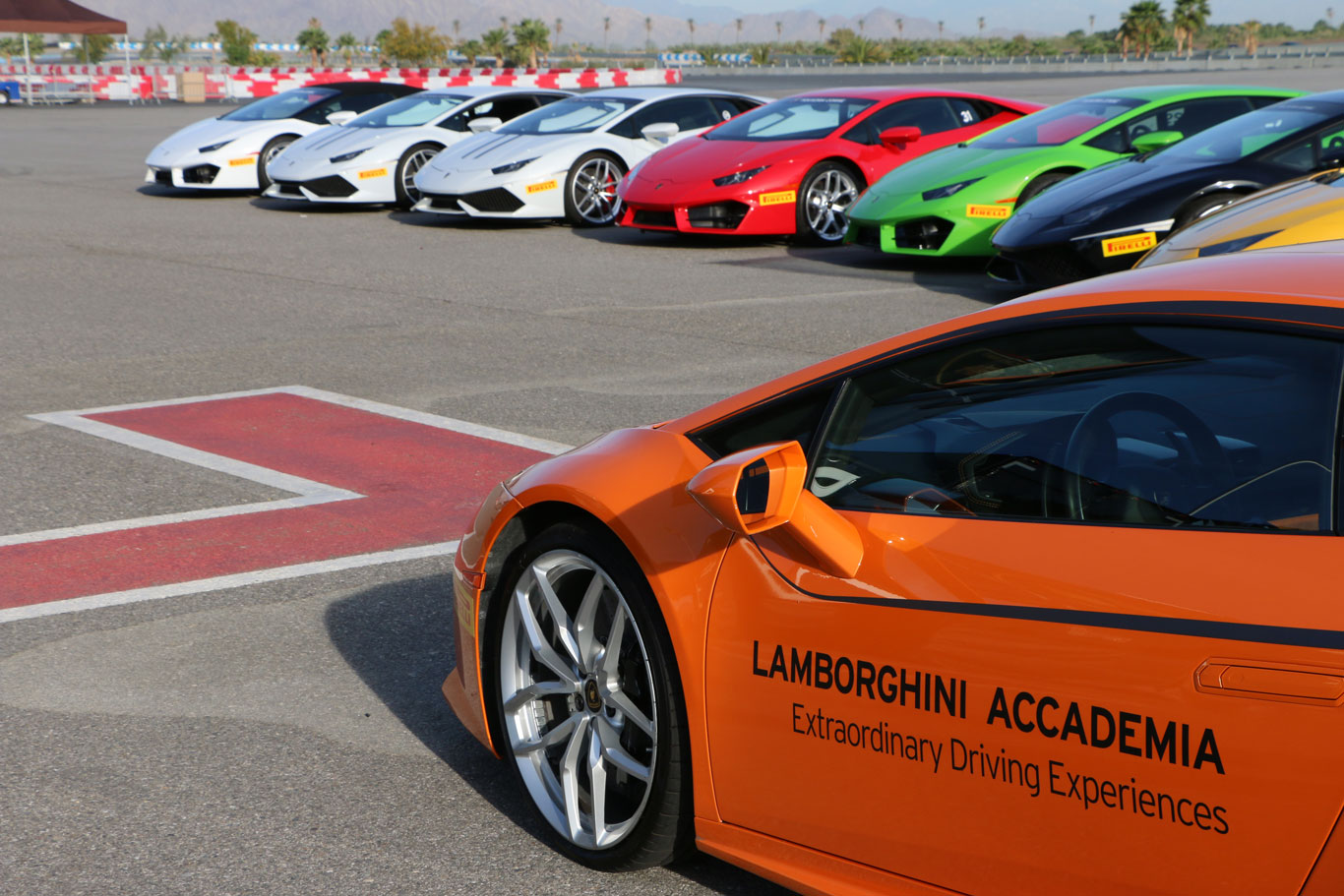610-hp joy ride: Driving a Huracán at the Lamborghini Esperienza
Even if you can’t afford a Lamborghini, you may be lucky enough to drive one someday. We were given the opportunity to do exactly that at the Italian company’s half-day driving school, Lamborghini Esperienza, which is offered two or three times a year at select locations in the United States.
The Esperienza started with the introduction of faculty and a chalk talk by lead instructor Paolo Biglieri. Then the session’s dozen students put the latest 610-hp Huracán models through some basic maneuvers before progressing to thrilling laps on the smooth asphalt of the Thermal Club, a private road-racing course near Palm Springs, Calif.
The Esperienza is the first step in joining Lamborghini’s Squadra Corse, or racing team, which trains novice and advanced drivers and lets them explore the potential of the Huracán models. After the Esperienza, drivers can advance to the more involved Accademia school.
Other than the obvious (driving a Huracán is a lot of fun), here are the lessons we learned:
- Find the ideal driving position. Because the Huracán is only 45.8 inches tall, getting in requires some planning, and limberness is a must. Wearing a helmet increases the degree of difficulty. But once inside, the cockpit is roomy and forward visibility is good. It was time to adjust the seating and steering positions, and after finding the proper relationship with the pedals, we set the seatback and steering wheel so that our arms were slightly flexed. The wheel—hands at nine and three, please—should be raked down, but there should still be a good view of the instrument display. Not that we would spend much time looking at it anyway; we were too busy. Finally, we toggled the driving mode selector on the wheel’s bottom spoke to Sport. That’s the setting between Strada, for street driving, and Corsa, for the most experienced driver on track. The Sport setting was just right for the coming exercises.
- Listen to the instructor. Among the six maestros in our group was Kevin Conway, a Super Trofeo champion who had once raced in NASCAR. “They will improve your driving skill,” promised Biglieri, who had just arrived from Italy to supervise. During the slalom exercise through seven cones, instructor Lee Carpentier sat in our passenger seat. During cornering exercises, ours was one of two cars that Dean DiGiacomo led through the track’s tightest section, and we listened to his coaching via a radio clipped to the seatbelt. On track for the laps behind DiGiacomo, we listened to his guidance through earphones embedded in the Stilo helmet.
- Eyes up. “The most important thing when you’re driving is to look where you want to go,” Biglieri said. That means looking to the next cone in the slalom, to the U-turn area for the return run, and to the stopping box where we brought the car to a halt under full braking pressure. On track, we looked ahead for the next turn’s entry point, then to the apex where we would begin to open up the throttle, and finally to the exiting point that was marked with a cone signifying full throttle ahead. In mid-corner, we alternated between looking well ahead and checking our immediate position on the racing line.
- Gentle inputs. “You have to be very soft with the steering wheel, throttle, and brake,” Biglieri said. With the 5.2-liter V-10 engine producing so much power and torque, we learned to be patient between the cones and upon exiting the turns. The Huracán Coupé has all-wheel drive and can placidly accept harder acceleration, while the Huracán Coupé RWD—driven only by the rear wheels—wiggles and squirms if the power isn’t dialed in judiciously before the wheels point straight.
- Keep some weight on the nose. The seven-cone drill is a useful test because, while the tendency is to maintain a constant throttle opening, the car turns best after the balance shifts forward, putting weight on the front tires. Carpentier laid it out in simplest terms: “Accelerate, lift,” he kept repeating. On the track, where heaviest braking pressure is applied early in the braking zone before a turn, it’s best to ease out of the brakes at the corner’s entrance, keeping the weight forward on the chassis while turning in.
- Let the tires do their job. The Huracán has wide, sticky tires. There should be no drama as long as the driver maintains chassis balance, follows the racing line to “straighten out” the corners, and uses the available track surface. A little bit of screeching is good. But when the tires howl, they’re about to let go.
- Breathe. Your natural reaction may be to hold your breath, but making an effort to breathe normally pays off in maintaining a sharp focus.
- Prepare to get hooked. Dan Lemmon of Boise, Idaho, drives a Nissan Altima and had never been on a track. “I thought the whole program was great,” said Lemmon, who came to the Palm Springs area for a tennis tournament and got a last-minute invitation to the school. “It’s addictive.” Indeed, some drivers who experience the Lamborghini Esperienza and learn the Huracán’s capabilities eventually go on to purchase a new Lamborghini or move into a higher level of competition.


